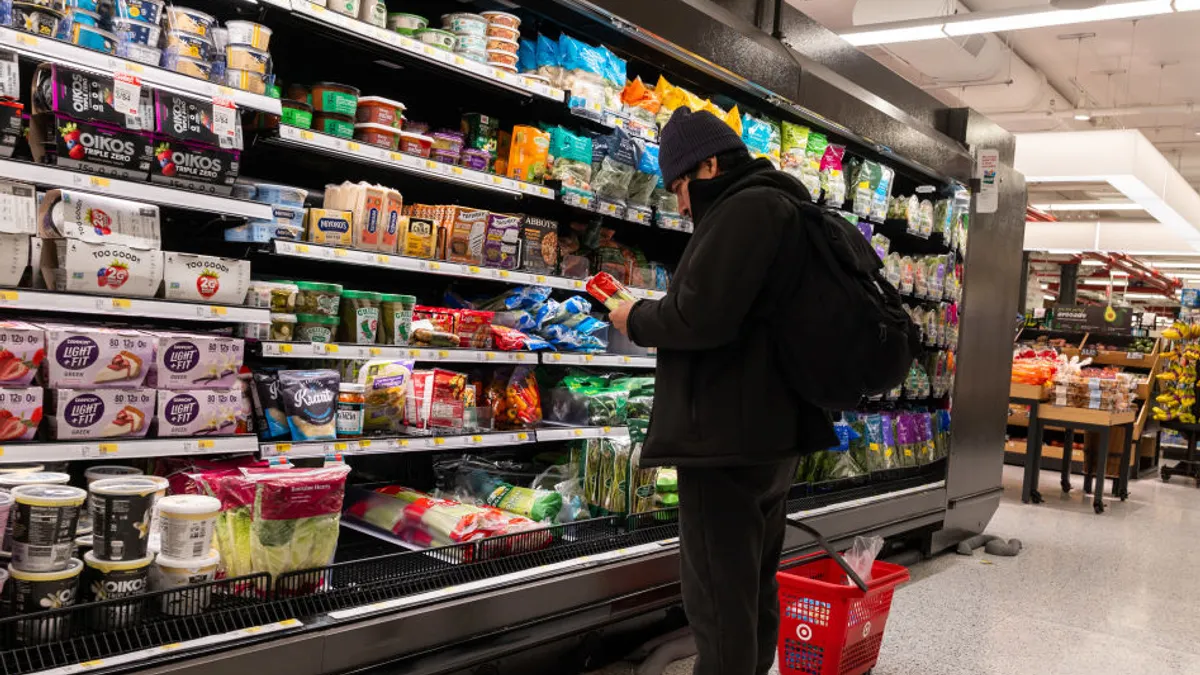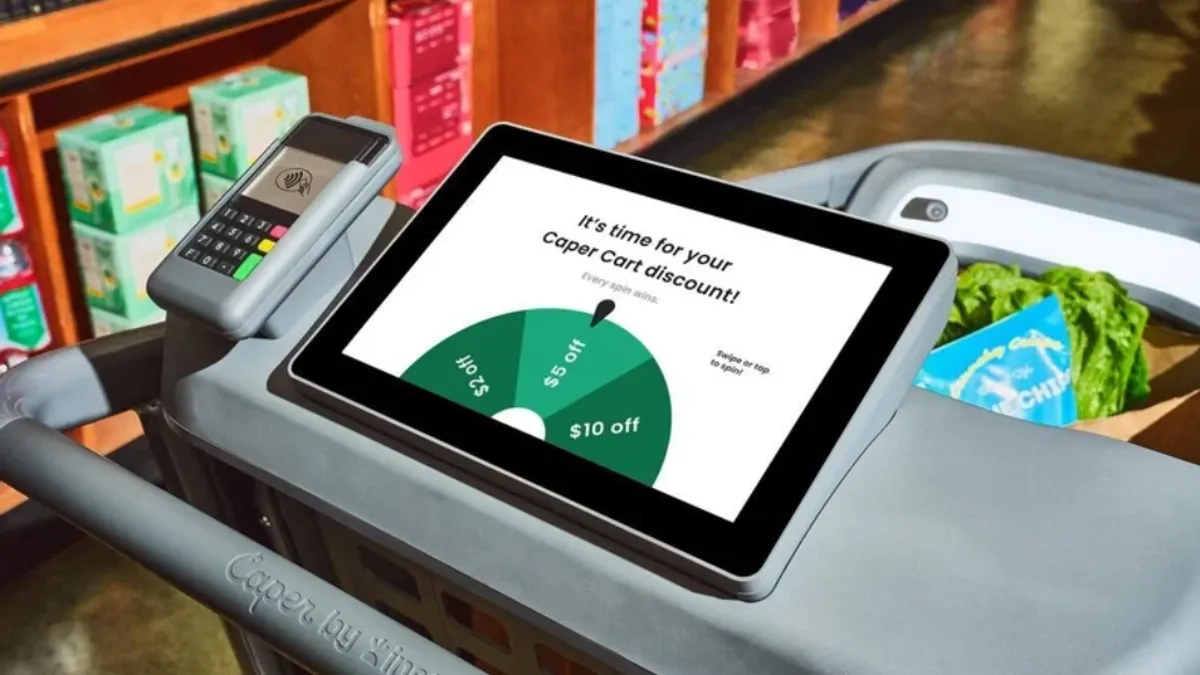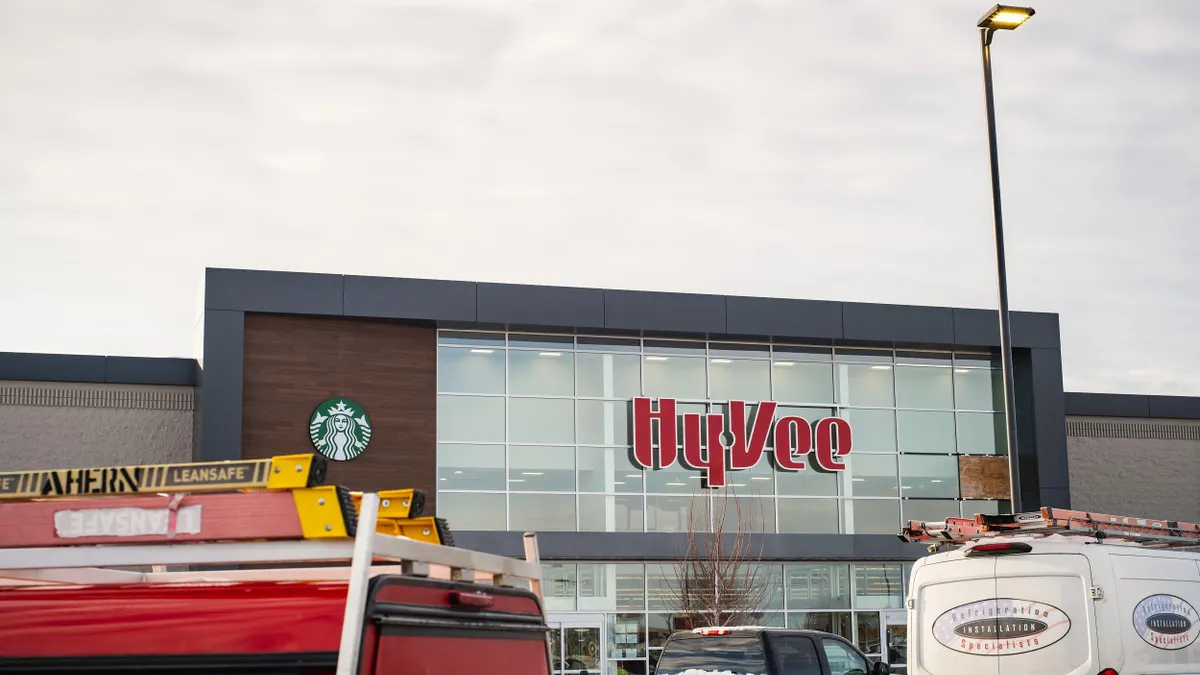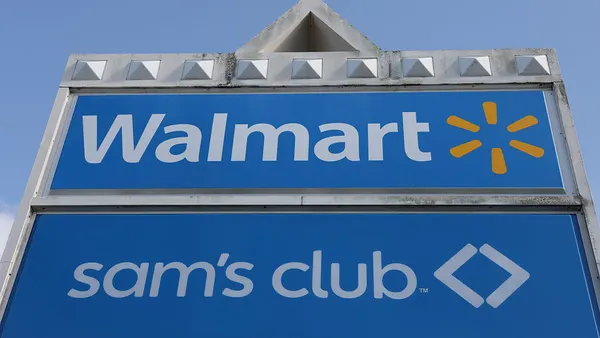When the pandemic forced Heinen’s to shut down its salad bars in March, it dealt a serious blow to the chain renowned for its prepared foods. But rather than wait around for local officials to give the okay for it to resume service — something that may not happen for months — Heinen’s decided to try something new.
It brought in Sally.
Standing six feet tall and weighing 750 pounds, Sally is a salad-slinging robot that serves up preset options like Caesar and Cobb along with custom mixes, all with just a few touches on the machine’s digital screen. Developed by San Francisco tech firm Chowbotics, Sally can hold up to 22 different fresh ingredients, including liquids, grains and proteins like chicken, brisket and salmon, all prepared and loaded on-site by Heinen’s workers. Shoppers punch in their selection, and the machine dispenses fresh veggies, lettuce and other ingredients along with a dollop of dressing into a compostable bowl.
Heinen’s introduced customers to Sally on Friday at its store in the town of Pepper Pike, Ohio, just a few miles from its corporate office. The green-and-white machine appears at the end of the store’s salad bar station, which is now filled up with beverages along with packaged salads and sides, creating a contactless meal destination. Heinen’s has programmed the system with five standard salad selection and one custom option, all for $7, with the goal of including more mix-and-match selections over time as shoppers get used to operating the machine.
Later this month, Chowbotics will roll out an app where shoppers can place their order and get a QR code to scan at the machine, making their salad prep fully touch-free.
Chris Foltz, Heinen’s chief innovation officer, said customers have missed being able to customize meals at the company’s self-service bars. Sally offers a way for them to do that while its 18 varieties of packaged salads, which have seen a major uptick in sales during the pandemic, serve as the grab-and-go option.
If the rollout goes well, Sally could ultimately end up replacing Heinen’s salad bars, Foltz said. Sales in the department have been declining in recent years — a trend that’s happening on a national scale. According to Nielsen data, salad bar sales declined 6.5% last year compared to 2018.
Even after the pandemic lifts, shoppers likely won’t rush back to a department where they handle common utensils and stand shoulder-to-shoulder serving themselves.
“Who knows when we’ll be able to open salad bars again, and when we do who knows how much interest there’ll be from the customer?” Foltz told Grocery Dive.
Mara Behrens, vice president of design and marketing with Chowbotics, said grocery stores weren’t a focus for the company pre-COVID. But now it’s seeing significantly more interest from retailers trying to replace their salad bars, even if just temporarily. The company will soon launch with three large retailers Behrens declined to name, as well as other smaller grocers in the coming weeks.
“We’ve really been focused on grocery lately,” she told Grocery Dive. “The demand has been quite incredible.”
A salad bar savior?
Could Sally be a lifeline for grocers smarting from the loss of their salad bars?
To be sure, retailers are desperate to boost sagging prepared food sales and inject life into the parts of their stores that have had to shut down during the pandemic. Many have kept their salad bars closed and piled everything from packaged meals to bottles of alcohol on them. Others, like Publix and Whole Foods, have turned their stations into full-service operations while some, like Balls Foods, have started reopening self-service salad bars with numerous safety steps in place.
According to Nielsen, salad bar sales are down nearly 54% so far this year. During a one-week period in mid-June, sales in the department dropped 95.5% compared with last year.
At Heinen’s, Sally can only produce around a fourth of the 150 or so salads stores used to sell during a typical lunch hour. But the machine portions out ingredients, which limits shrink. And it can charge extra for premium ingredients, which allows retailers to offer items like salmon and lobster that couldn’t go in a traditional salad bar.
Sally is also thoroughly connected. It delivers customer data to retailers, letting them know which ingredients are selling best, and at what times. Whenever one of the machine's cannisters of ingredients is running low, it sends a text message to a store employee.
Behrens pointed out that Sally isn't just a salad-making machine. It can dispense yogurt and dish out custom grain bowls. It's automating the process of mixing and matching fresh, on-trend ingredients that have made chains like Chipotle and Sweetgreen so popular.
And Sally isn’t the only robotic meal maker on the market. Over the past few years, so-called “smart” vending machines able to dispense everything from piping-hot pizza to ramen noodle bowls have begun cropping up at airports, universities and corporate offices. With many of those facilities shut down or seeing major declines in foot traffic, some of the machines' manufacturers are turning their attention to grocery stores.
Technologically advanced vending machines from companies like Basil Street Pizza and Yo-Kai Express, which dispenses bowls of hot ramen in 45 seconds, are a far cry from the drab, spinning-coil units that have long defined vending machines in consumers' minds, said Chris Albrecht, editor-in-chief of food technology site The Spoon.
Albrecht predicts the next-generation machines will start popping up in more public and private spaces over the next few years, with many consumers trialing the technology.
“There are new opportunities coming [for smart vending machines] and I think some of those new opportunities are going to be spurred by the fact that people are going to be more conscious of not just where their food comes from, but how many hands have touched it,” he told Grocery Dive.
Deglin Kenealy, CEO of Basil Street, said he’s been having more conversations lately with grocers but hasn’t yet inked a deal with one. The company expects to place up to 100 units this year and as many as 5,000 over the next two years, primarily in hospitals, factories and military bases.
“People are so used to using ATMs, DMV kiosks and the Coinstar machines,” Kenealy told Grocery Dive. “So we're really moving in that direction. And I think that the grocery stores are starting to realize is that it's very, very difficult nowadays to differentiate yourself solely in groceries.”
According to Nielsen, salad bar sales are down nearly 54% so far this year. During a one-week period in mid-June, sales in the department dropped 95.5% compared with last year.

The automation revolution
Retailers are starting to weave automation into their operations, from robotic online fulfillment to floor-cleaning machines. Last year, Stop & Shop put a bread-making robot inside a store in Milford, Massachusets. Automation promises labor savings and increased speed and precision, but labor advocates argue robots will cut loose hundreds of thousands of workers over the next several years.
Sophisticated vending machines could be a logical next step in this automation revolution. However, they may not make sense for grocers that are still able to sell brick-oven pizzas, handmade sandwiches and grab-and-go soups, said Albrecht. The machines also have to make sense economically. They can’t handle the same volume of food as self-service bars and often come with a learning curve for the company. And they have to sell enough to scale and recoup their upfront cost — $35,000 apiece, in Chowbotics’ case.
“[Grocers] need something that isn't just a good idea, but something that they could implement at scale right away,” Albrecht said.
It's also not clear how — or where — smart vending machines would fit into store operations once grocers are able to bring back their self-service bars and restaurants. Could Sally and the salad bar learn to get along?
Foltz said the pandemic didn't drive his initial interest in Sally. When he first evaluated the machine pre-COVID, he didn't see the value for Heinen's stores.
"I was like, 'what does that actually do?'" he said. "[Customers] already get their customized salads through the salad bar and their packaged salads for grab-and-go — so what does that really do in the grocery store environment?”
But he did see a use for the salad-making bot in the company's forthcoming health platform, called Fx. That program, announced last year and set to roll out later this year, will offer food prescriptions and nutrition counseling to shoppers. Those who enroll will be able to choose special salads and grain bowls available through Sally that fit their prescription.
Fx will also be available to employers, meaning Heinen’s-branded Sally machines could very soon start showing up at office buildings, factories and other settings.
Four months into a global pandemic, Foltz said Sally also makes sense as an in-store solution at a time when there aren't many good options available. To help shoppers navigate the machine, Heinen’s has placed an instructional sign next to it and posts a staff member during busy hours. To draw shoppers in, the company sent out emails out to customers who have used its salad bars in the past.
Pretty soon, Foltz said he'd like to see Sally in every one of Heinen's stores.
“The things we need to prove are, how many customers can it serve an hour? And do the customers adapt to it quickly?” Foltz said. “If we can prove those things, then we’ll roll it out pretty quickly.”
Correction: A previous version of this story misstated one of the items available from Sally the robot. The machine only dispenses chilled items, not hot ones.






















